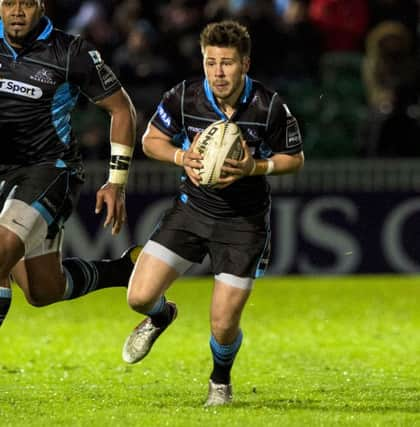Allan Massie: Why driving mauls are distorting the game


I don’t have the figures but I have the impression that more tries at the top level of the game are scored in this way than in any other. Add to them the number scored when such a maul is checked or breaks down just short of the try-line and someone grabs the ball and squeezes over, and you may think the number excessive.
I hope it’s not only because I am Scottish and we have been on the receiving end of such tries rather too often that I think the number of tries scored in this fashion is disproportionate. Indeed I would go further and say it is distorting and spoiling the game
Advertisement
Hide AdAdvertisement
Hide AdOf course, as England’s Chris Robshaw learned to his cost in the World Cup, you are not guaranteed to score from your throw to a five-metre lineout. Nevertheless, if you secure possession and construct your driving maul skilfully, it’s devilish hard for the opposition to stop it without conceding another penalty (and often a yellow card).
So what? – you may say. Well, the first reply is that the maul is uniquely privileged. The ball-carrier is allowed to advance shielded by his team-mates. He is allowed to be in bodily contact with them. If he tried this in any other situation the referee would blow his whistle and award a penalty to the opposing side because they would have been unlawfully prevented from tackling the ball carrier.
The player with whom he was in contact would have been offside and guilty of obstruction. But when it comes to the maul these laws are suspended for the benefit of the side in possession.
They are not however suspended for the defending side. On the contrary. They are not allowed to tackle the ball-carrier whatever he is in the maul; and, if, when he is at its tail, a defender nips round to try to wrestle the ball away from him, he will be penalised for being offside. At no other time is a player forbidden to tackle the ball-carrier.
The law relating to the maul is therefore both illogical and unfair. If the laws relating to offside and obstruction are suspended for one side, they should also be suspended for the other – for the duration of the maul.
A few years ago the maul was so dominant, that the IRB experimented with a law permitting the maul to be pulled down (which is after all the most effective way of checking it.)
I thought this improved the game, but there were squawks of protest, especially from England, and the experiment was abandoned. So we are where we are today, with more tries coming from driving mauls than from sparkling back-play.
Glasgow were in any case some way short of their best in Paris, and, even setting aside their inability to resist the driving maul, contributed to their own defeat by making far too many handling errors. Their two Fijians and Stuart Hogg were among the most guilty, infuriatingly after making an incision into the Racing defence before losing the ball in the tackle.
Advertisement
Hide AdAdvertisement
Hide AdThen when Glasgow were still very much in the match just before half-time, they persevered with playing pick-and-go close to the Racing line when there was space out to the right crying out to be used.
Nevertheless, the final score flattered Racing. There wasn’t that much between the teams, and there is no reason why Glasgow shouldn’t win the return. Of course they have to beat Northampton at Franklin’s Garden tomorrow to retain any interest in the competition and, given the way Northampton played against Leicester last weekend, that is a very tough undertaking.
Two of the young Glasgow players did their reputation a good deal of good in Paris. Zander Fagerson at tight-head showed just why now elderly props have been coupling his name with our 1984 Grand Slam hero, the Mighty Bear, Iain Milne.
Behind the scrum young Ali Price was lively, skilful and brave. There were a couple of occasions when he seemed hesitant, but all scrum-halves nowadays – even New Zealand ones – have moments when they hover over the ball, while waving imperious arms directing forwards to take up supporting or blocking positions.
I suppose young Price is still some way back in the queue behind Greig Laidlaw, with Henry Pyrgos, Sam Hidalgo-Clyne and perhaps Grayson Hart ahead of him; but if he maintains this form he will very soon be snapping at their heels .He is alert and quick on the break and has a very effective left foot too.